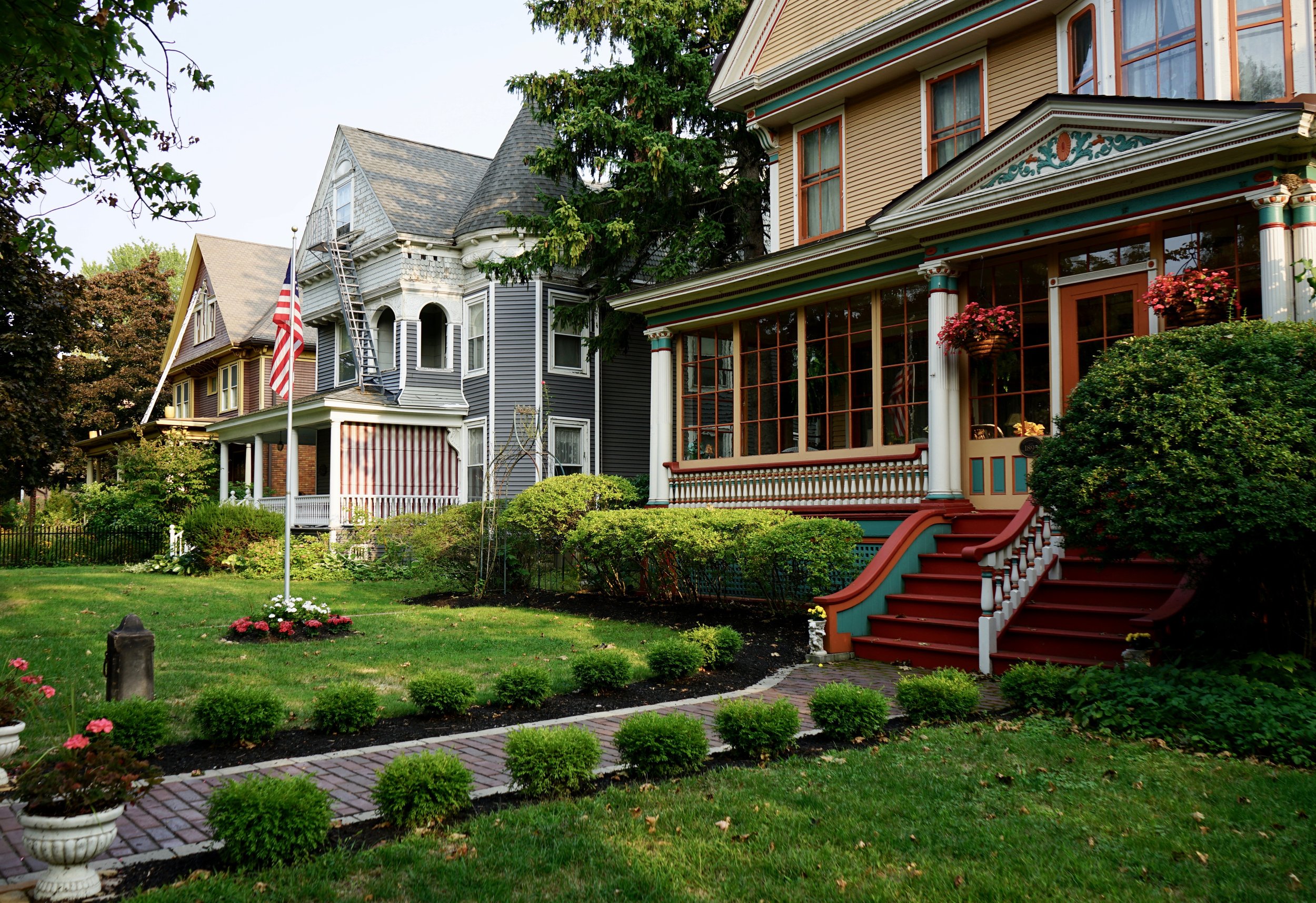
Sweeney Estate District
The Sweeney Estate Historic District is a residential neighborhood located in the north portion of the City of North Tonawanda, Niagara County, New York. The district contains 452 primary resources and 191 secondary resources in an area bounded by Vandervoort St. to the west, Division St. to the east, Tremont St. to the south, and Thompson St. and Pine Woods Park to the north. These boundaries were drawn to include the strongest collection of resources with architectural integrity remaining today within the historic boundaries of the residential neighborhood established by multiple generations of the Sweeney family. The streets are lined with oak, maple, and elm trees, with a selection of houses ranging from large Queen Anne and Colonial Revival residences from the late-nineteenth century to smaller bungalows, American Foursquare and Colonial Revival style houses from the early twentieth century. The older, larger houses are set on larger lots with deeper setbacks and tend to be on the east-west streets, with the smaller, middle-class housing set on relatively consistent setbacks and lot sizes, primarily in the northern portion of the district. Today, the district remains a cohesive neighborhood retaining the plan, form, architecture, and character as a residential neighborhood developed primarily during the late nineteenth and early twentieth centuries.
Developed in pieces over several generations of management and ownership by the Sweeney family estate, this district was home to some of North Tonawanda’s wealthiest residents by the late nineteenth century, and they were joined by middle-class citizens in the early twentieth century. The area developed through the combined effort of several members of the Sweeney family, who laid out the streets and lots then hired contractors and builders to construct residences on their land. With deed restrictions in order to ensure consistency of styles, builders maintained a consistent vocabulary of popular architectural styles that were typical of the period, with Bungalow, Craftsman, Colonial Revival, American Foursquare and Tudor Revival residences aimed to attract middle-class residents. As most of the houses were constructed in this manner around the same time, this lends an overall sense of aesthetic cohesiveness and unity that is common in many early-twentieth-century suburban-style developments. Today, the Sweeney Estate Historic District contains an intact collection of built resources that thoroughly represents the historic context of this type of settlement pattern and architectural styles from the late nineteenth and early twentieth centuries.
Approximately 18 percent of the primary resources in the Sweeney Estate Historic District are non-contributing to the character and significance of the district. Many of those resources identified as non-contributing reflect significant alterations and the removal of critical architectural and character-defining features such as porches, sheathing and materials, ornamental elements, and fenestration. The addition of vinyl or aluminum siding or vinyl windows does not automatically render a building non-contributing if all other elements retain integrity in their original locations and window openings; however, if several features have been altered or removed, this has resulted in a determination that the property does not contribute to the nominated district. Many buildings that have had modern sheathing materials installed retain their original overall size, shape, and massing, as well as trim, moldings and detailing, and in many instances, it can be assumed that vinyl or aluminum siding was installed over the original wood clapboard or shingle sheathing, making this alteration potentially reversible. Some properties have been considered non-contributing if they were constructed after the period of significance. These properties form a very small minority in the historic district. While they may be considered non-contributing buildings to the historic district, the presence of these buildings does help to maintain the continuous streetscape of the residential streets in the nominated district, without large gaps or holes. The Sweeney Estate Historic District reflects a high level of integrity both of its architectural components and also its residential plan. The area’s historic layout and setbacks from the street have been maintained, along with the bulk of the historic building stock. While streets have been paved with asphalt, and some have been widened, these are typical improvements that occur in most communities and do not detract from the overall character and integrity of the nominated district. Non-contributing resources comprise a minority proportion of buildings in the Sweeney Estate Historic District, and their presence also does not detract from the overall integrity of the district. Even though some of the buildings may be non-contributing due to individual alteration and loss, there is a good level of integrity to the cohesive streetscape to convey the original history and design of the neighborhood as it evolved as a residential community in North Tonawanda.

